Abstract
A combination of zero field triplet state techniques are used to study the excited electronic states of a series of flavin and flavin related molecules both in single crystals and glass matrices. Particular attention is given to the effects of solvent interaction on the triplet state properties of the flavin molecules. The total phosphorescence decay rate constants at 1.4 degrees K are reported for the flavin molecules in polar and nonpolar solvents. The rate constants are then correlated to the degree of solvent interaction. Results indicate possible complex formation between the isoalloxazine and adenine groups in FAD. Finally, the results and possible interpretation on the study of a flavoenzyme, L-amino acid oxidase are presented.
Full text
PDF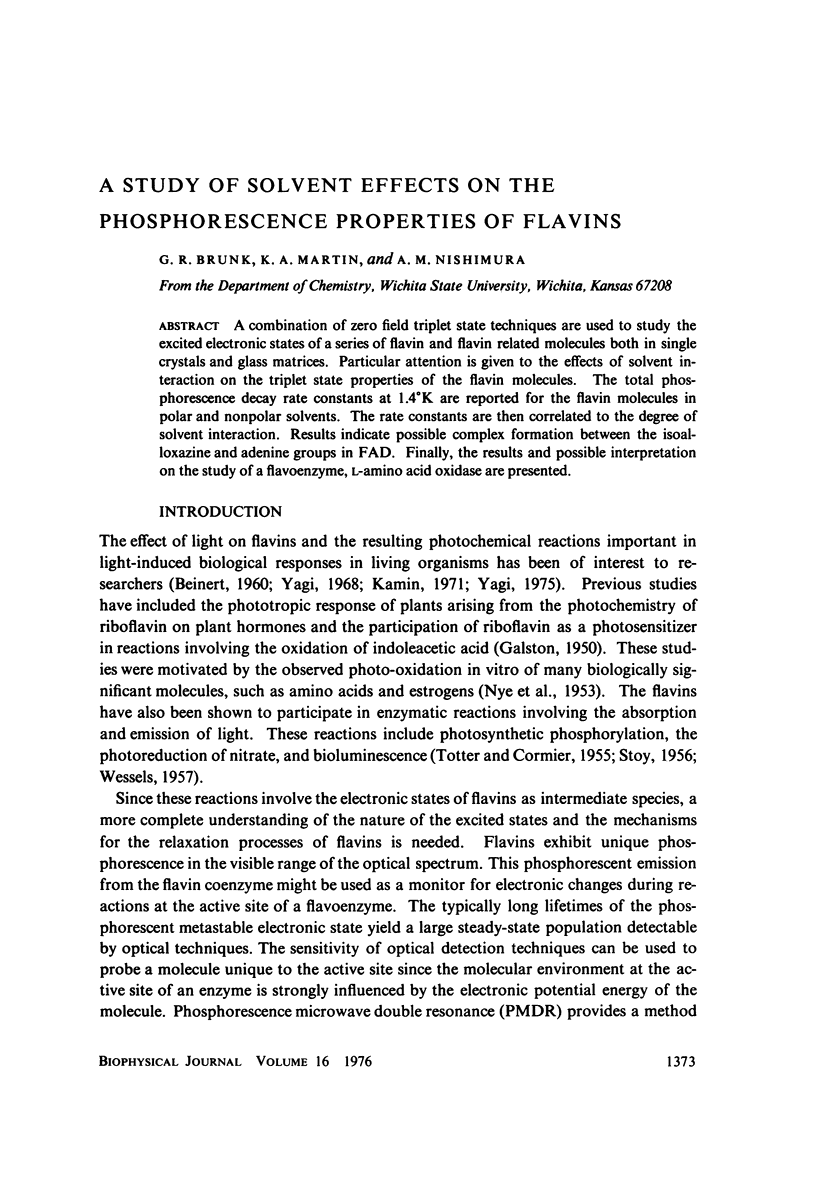
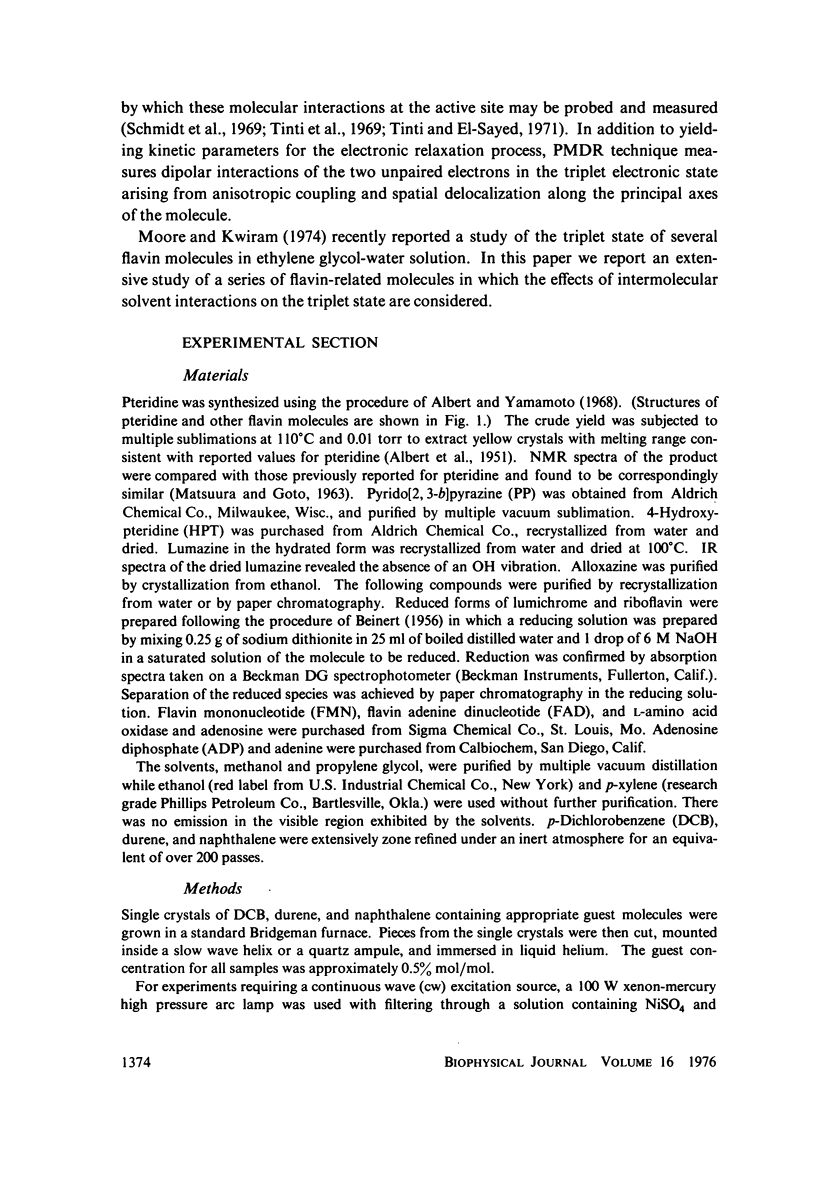
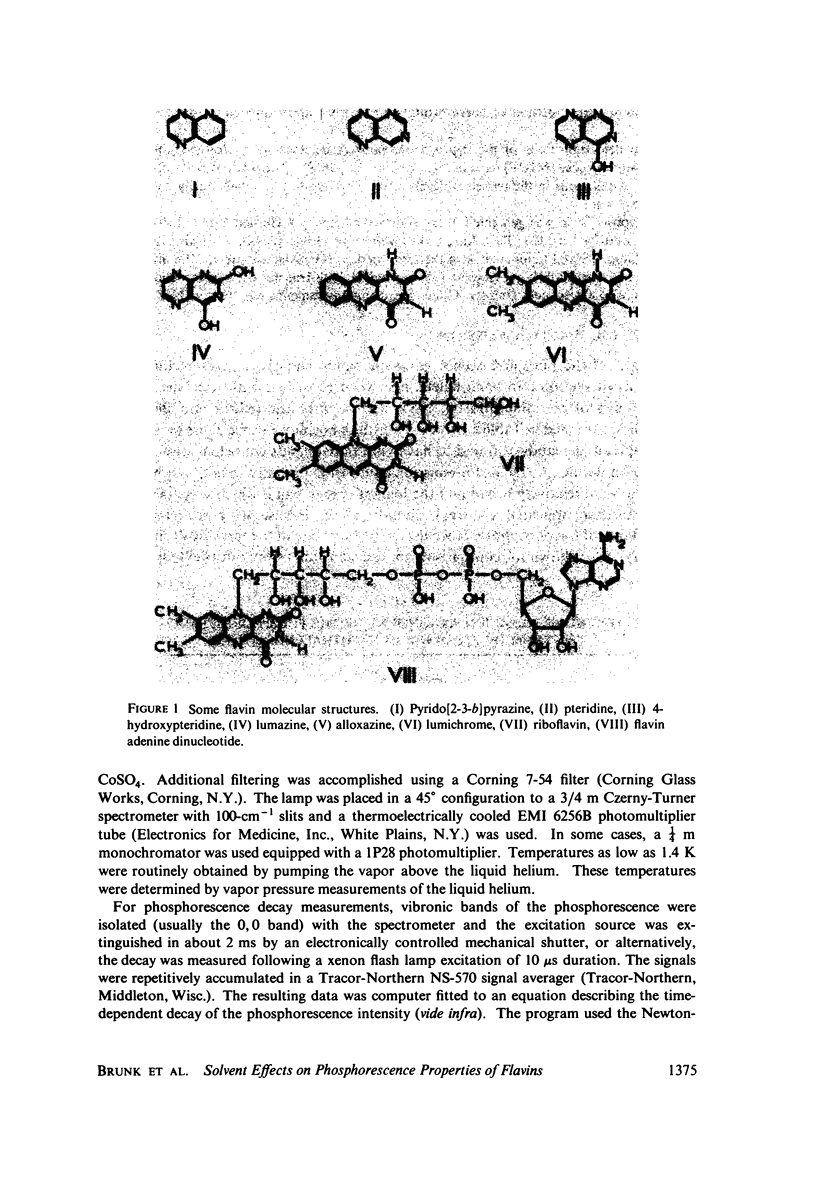
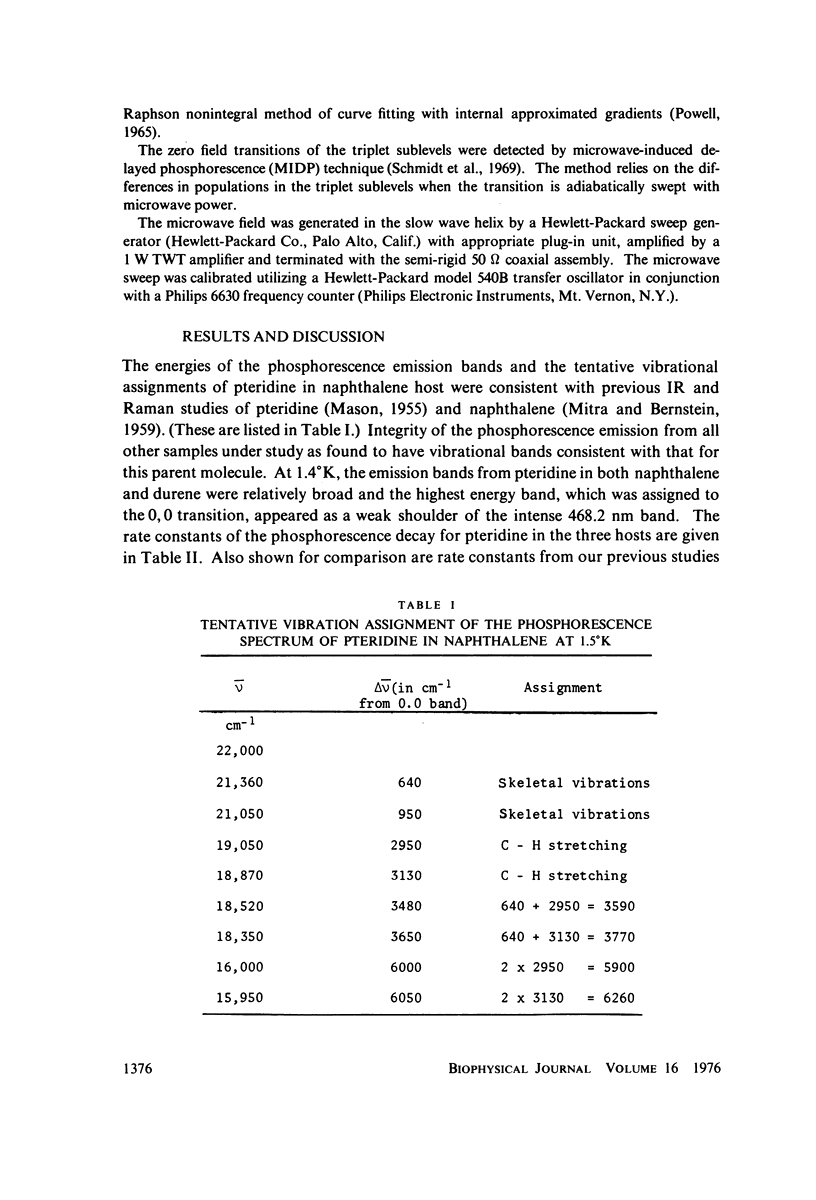
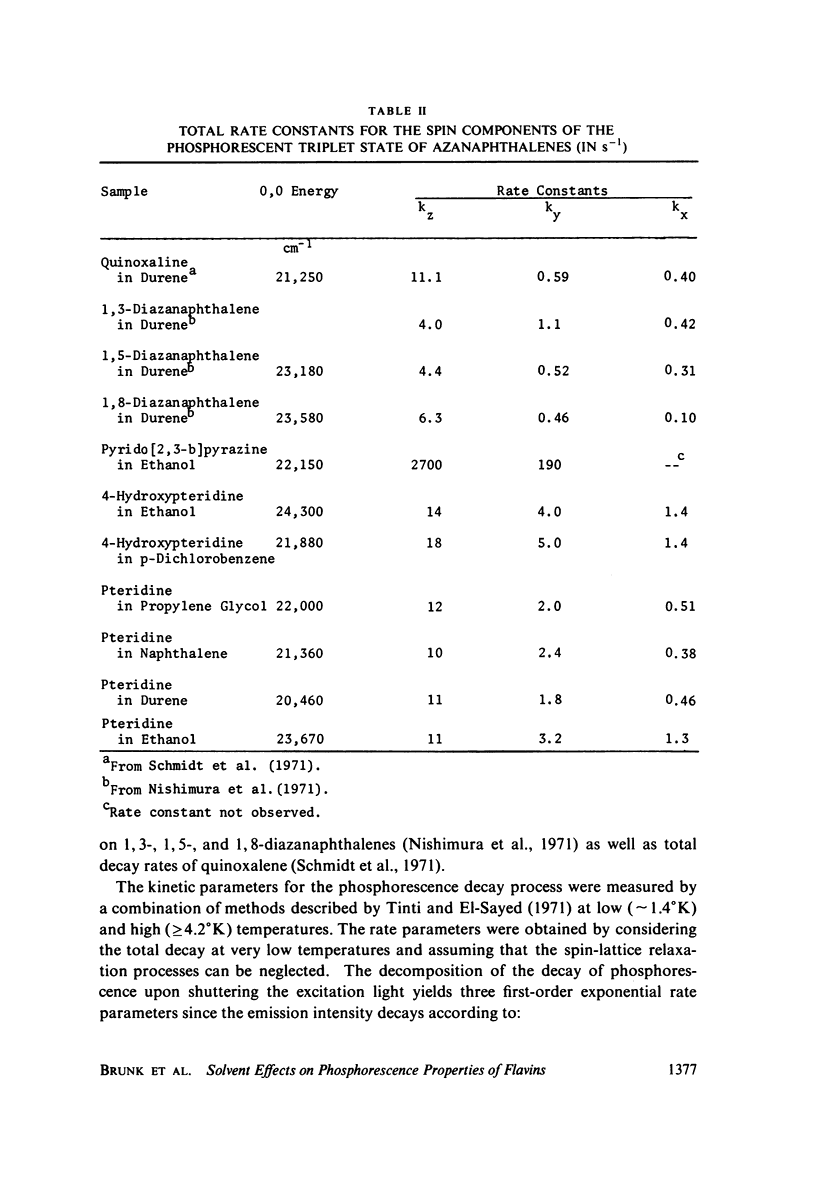
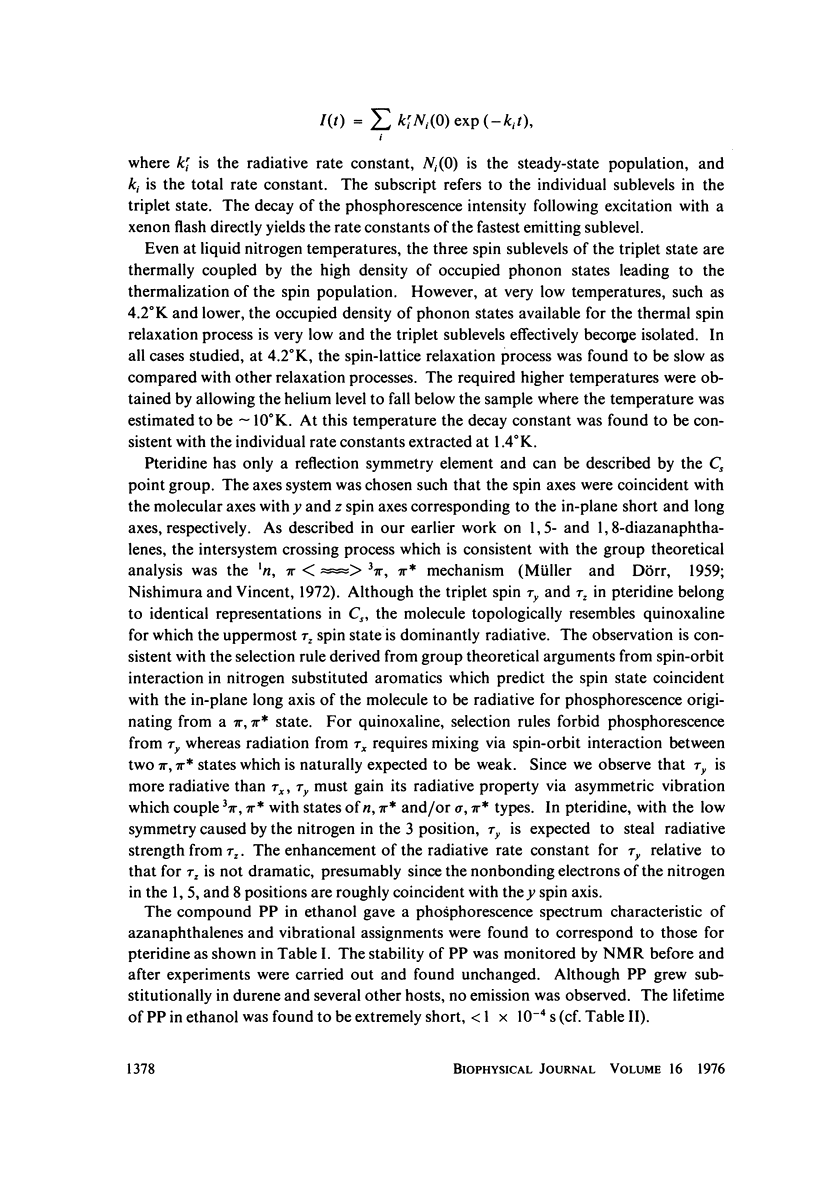
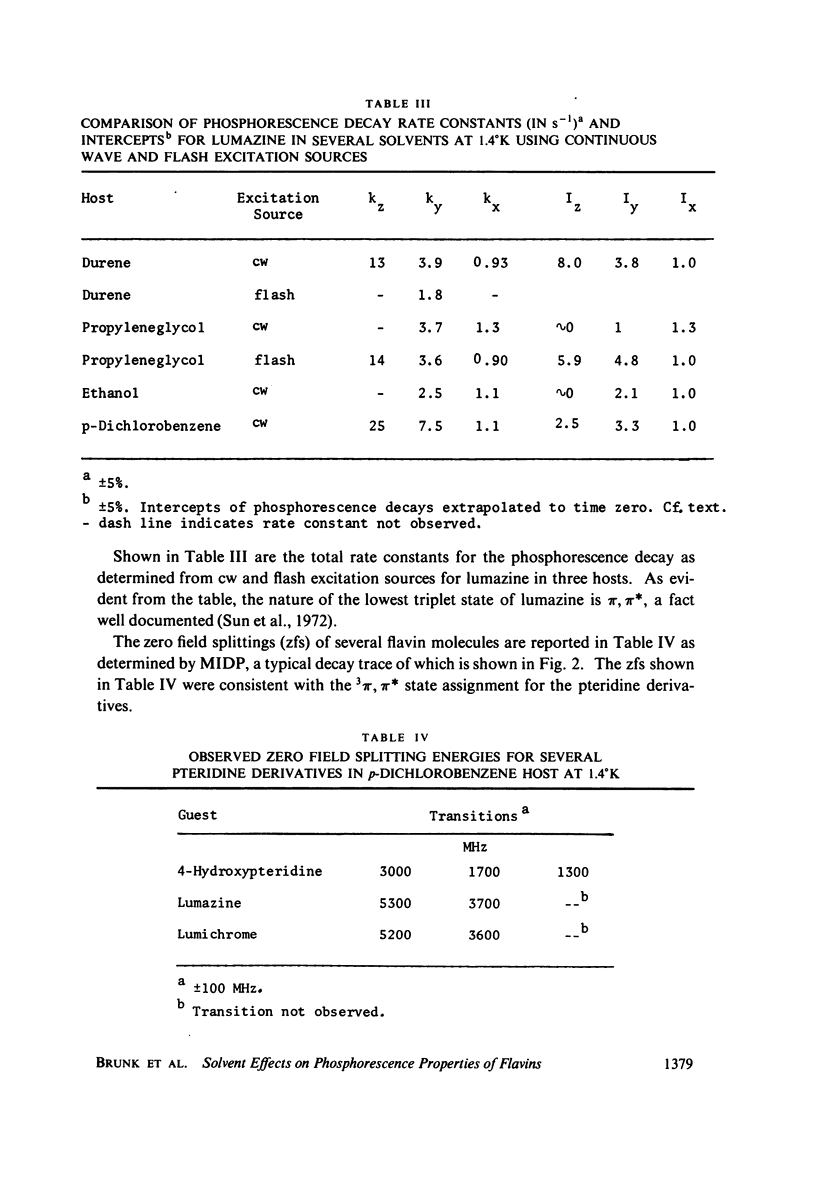
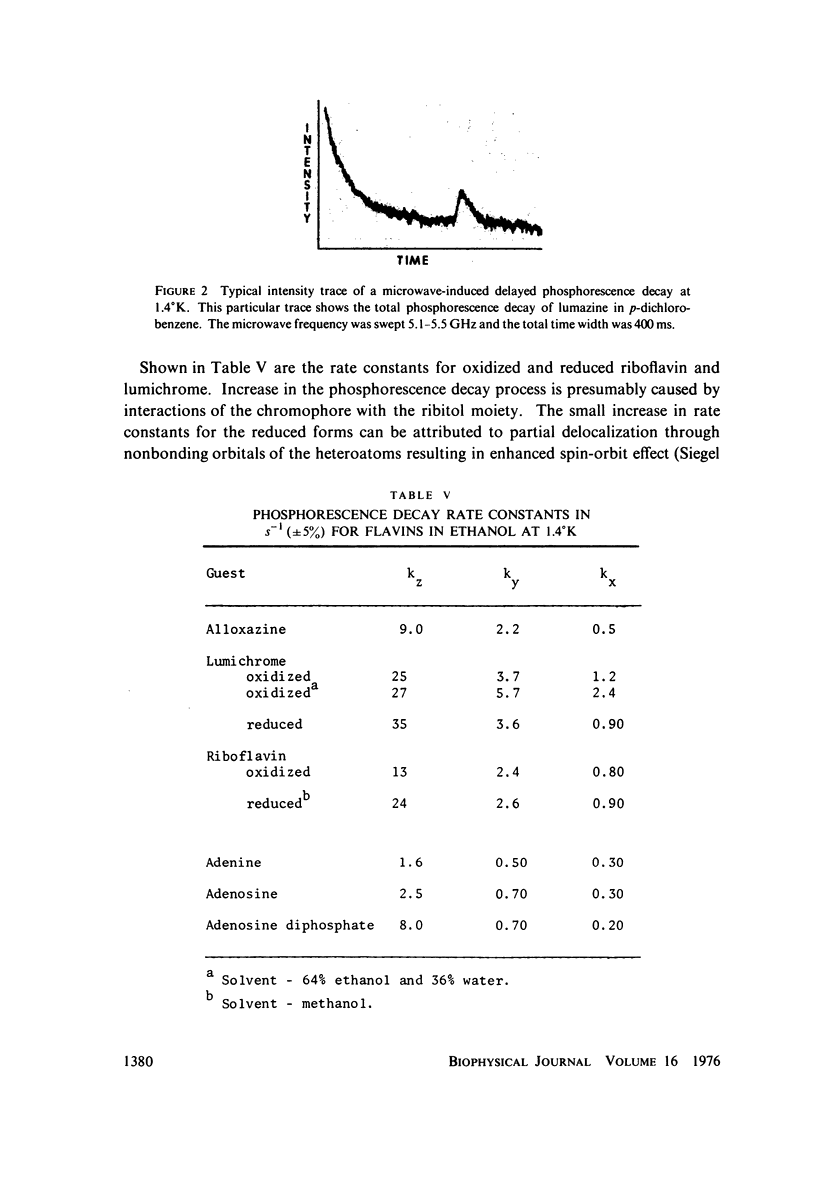
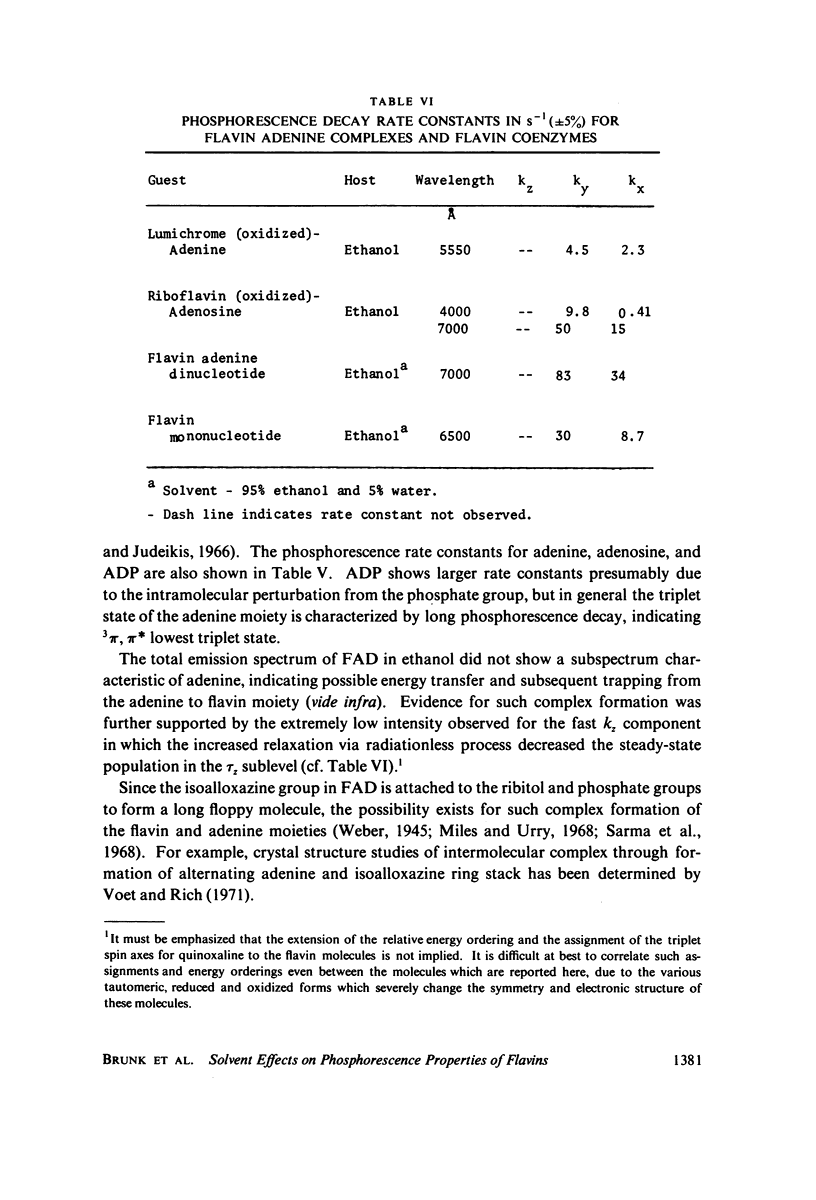
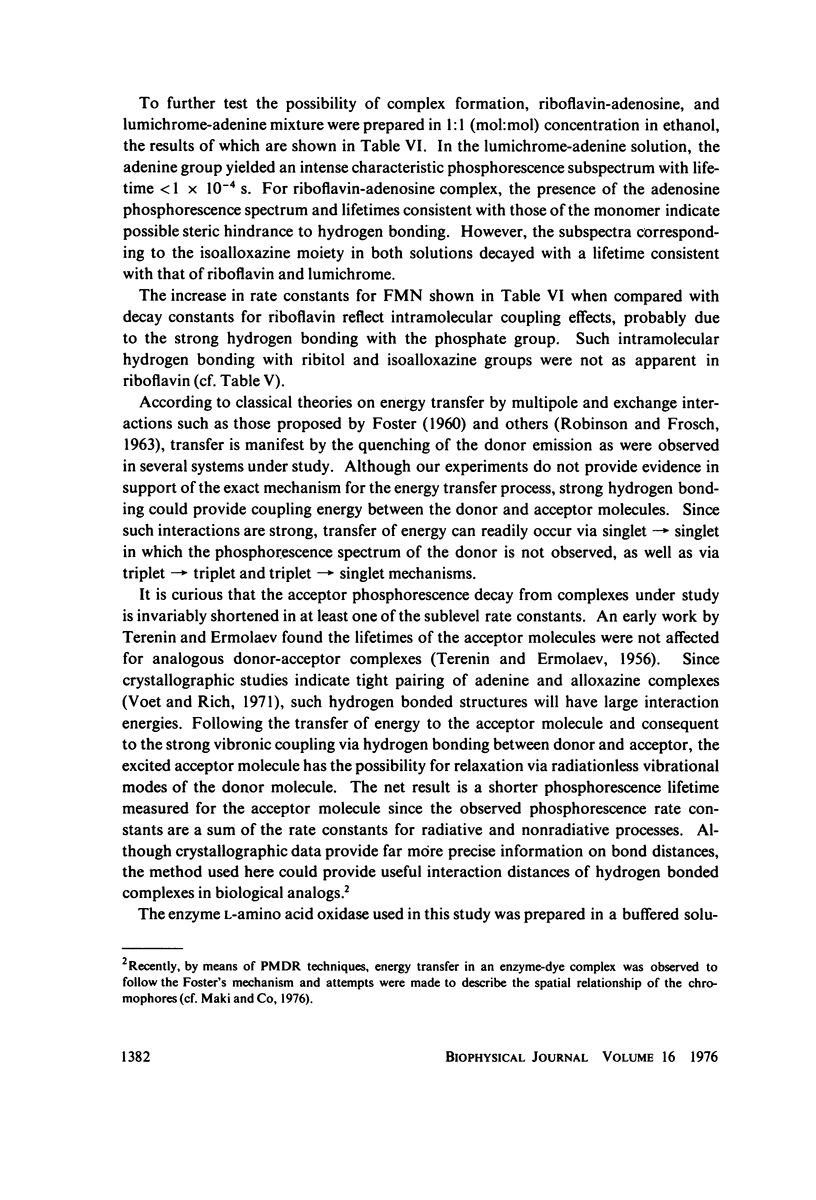
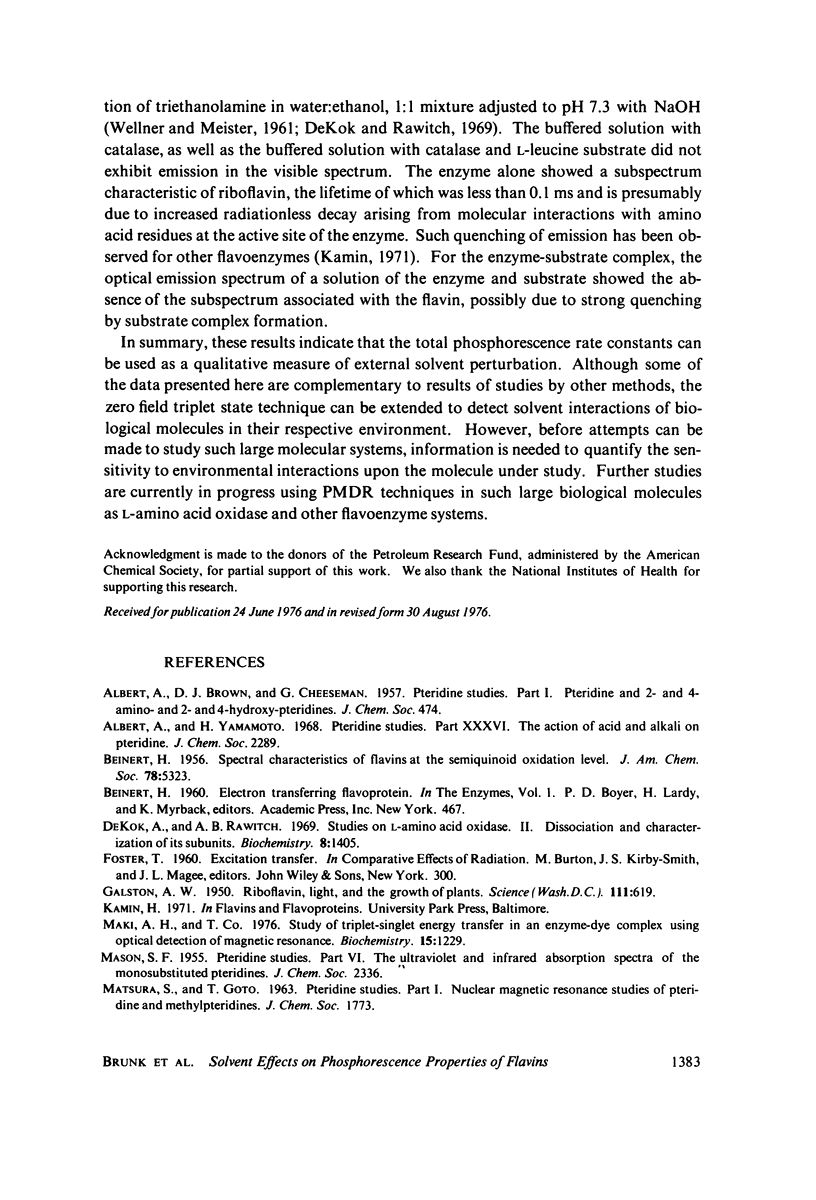

Selected References
These references are in PubMed. This may not be the complete list of references from this article.
- GALSTON A. W. Riboflavin, light, and the growth of plants. Science. 1950 Jun 9;111(2893):619–624. doi: 10.1126/science.111.2893.619. [DOI] [PubMed] [Google Scholar]
- Maki A. H., Co T. Study of triple-singlet energy transfer in an enzyme-dye complex using optical detection of magnetic resonance. Biochemistry. 1976 Mar 23;15(6):1229–1235. doi: 10.1021/bi00651a009. [DOI] [PubMed] [Google Scholar]
- Miles D. W., Urry D. W. Reciprocal relations and proximity of bases in falvin-adenine dinucleotide. Biochemistry. 1968 Aug;7(8):2791–2799. doi: 10.1021/bi00848a014. [DOI] [PubMed] [Google Scholar]
- Moore T. A., Kwiram A. L. An investigation of the triplet state of flavine and flavoproteins by optical detection of magnetic resonance. Biochemistry. 1974 Dec 17;13(26):5403–5407. doi: 10.1021/bi00723a025. [DOI] [PubMed] [Google Scholar]
- STOY V. Riboflavin-catalyzed enzymic photoreduction of nitrate. Biochim Biophys Acta. 1956 Aug;21(2):395–396. doi: 10.1016/0006-3002(56)90036-1. [DOI] [PubMed] [Google Scholar]
- Sarma R. H., Dannies P., Kaplan N. O. Investigations of inter- and intramolecular interations in flavin--adenine dinucleotide by proton magnetic resonance. Biochemistry. 1968 Dec;7(12):4359–4367. doi: 10.1021/bi00852a031. [DOI] [PubMed] [Google Scholar]
- Sun M., Moore T. A., Song P. S. Molecular luminescence studies of flavins. I. The excited states of flavins. J Am Chem Soc. 1972 Mar 8;94(5):1730–1740. doi: 10.1021/ja00760a052. [DOI] [PubMed] [Google Scholar]
- TOTTER J. R., CORMIER M. J. The relation of bacterial luciferase to alternative pathways of dihydroflavin mononucleotide oxidation. J Biol Chem. 1955 Oct;216(2):801–811. [PubMed] [Google Scholar]
- WELLNER D., MEISTER A. Studies on the mechanism of action of L-amino acid oxidase. J Biol Chem. 1961 Aug;236:2357–2364. [PubMed] [Google Scholar]
- WESSELS J. S. Studies on photosynthetic phosphorylation. I. Photosynthetic phosphorylation under anaerobic conditions. Biochim Biophys Acta. 1957 Jul;25(1):97–100. doi: 10.1016/0006-3002(57)90423-7. [DOI] [PubMed] [Google Scholar]
- deKok A., Rawitch A. B. Studies on L-amino acid oxidase. II. Dissociation and characterization of its subunits. Biochemistry. 1969 Apr;8(4):1405–1411. doi: 10.1021/bi00832a015. [DOI] [PubMed] [Google Scholar]


